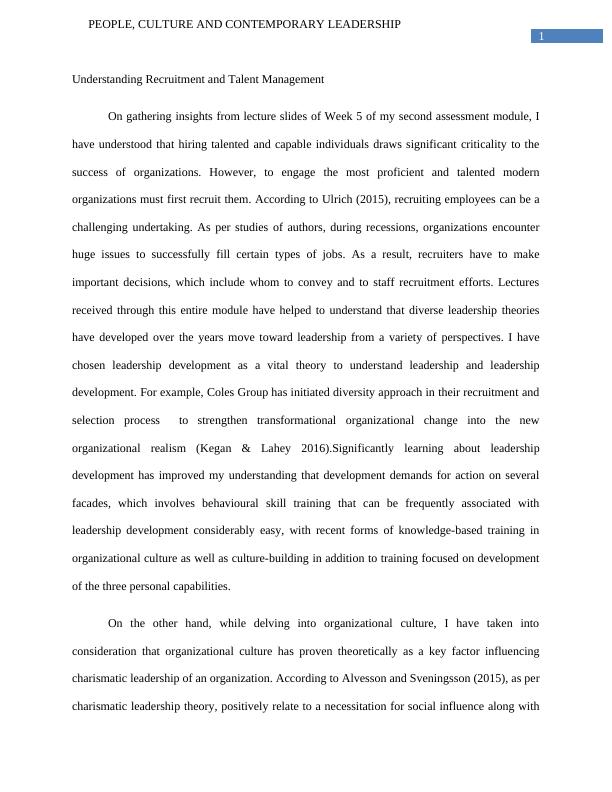Understanding Recruitment and Talent Management
Write a reflective journal on the theories, online resources, industry guest, in-class activities, assessment feedback, and psychometric tests related to people, culture, and contemporary leadership.
11 Pages2684 Words83 Views
Added on 2023-03-17
About This Document
This document discusses the importance of recruitment and talent management in organizations. It explores different leadership theories and the role of organizational culture. It also provides resources and industry insights on effective succession planning and developing leadership skills.
Understanding Recruitment and Talent Management
Write a reflective journal on the theories, online resources, industry guest, in-class activities, assessment feedback, and psychometric tests related to people, culture, and contemporary leadership.
Added on 2023-03-17
ShareRelated Documents
End of preview
Want to access all the pages? Upload your documents or become a member.
People, Culture and Contemporary Leadership - Reflective Journal
|10
|2746
|455
People, Culture and Contemporary Leadership - Reflective Essay
|11
|2890
|175
Reflective Journal on Talent Management and Leadership
|9
|2528
|47
Reflective Essay on Organizational Performance, Talent Acquisition, Culture and Engagement, and Leadership Development
|8
|2371
|475
Reflective Journal
|9
|2558
|94
Reflective Journal on Leadership
|20
|3156
|349




